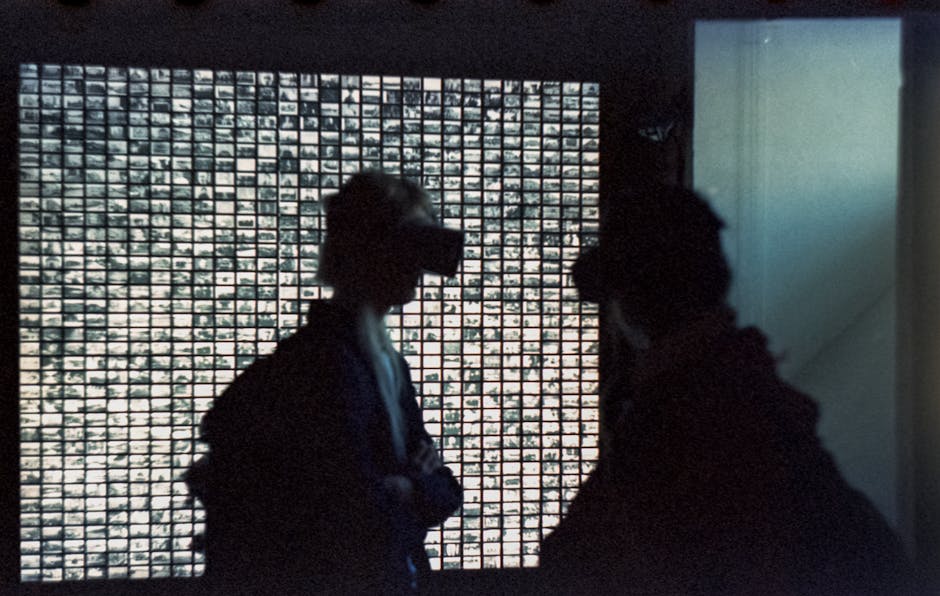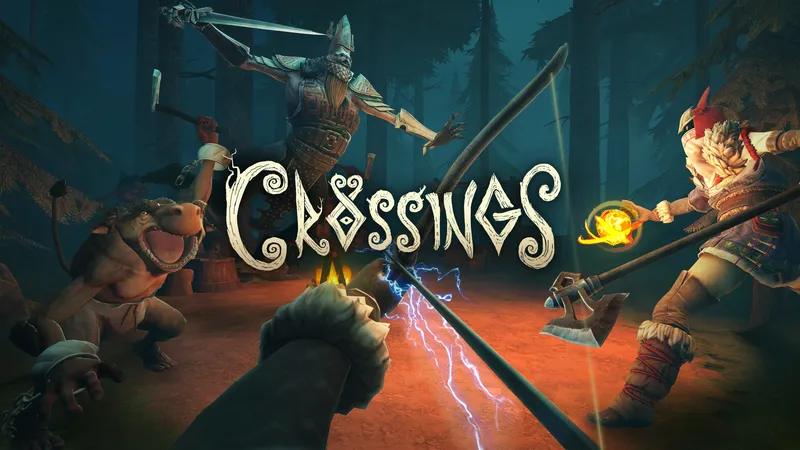For decades, video games have offered windows into other worlds, but virtual reality (VR) shatters that window entirely, inviting players to step directly through the frame. What was once a distant dream confined to science fiction is now a rapidly maturing and accessible platform, fundamentally altering our relationship with interactive entertainment. VR gaming has evolved far beyond simple tech demos and wave shooters; it now hosts sprawling AAA adventures, innovative indie experiences, and burgeoning social ecosystems. This technological frontier is not just about strapping a screen to your face; it’s about embodiment, physical interaction, and a complete redefinition of player agency. This article explores the intricate landscape of modern VR gaming, dissecting the hardware that powers it, the unique gameplay mechanics it enables, the development challenges it presents, and the exciting future it promises for the entire gaming industry.
The Evolution of VR Gaming: From Niche Tech to Mainstream Reality
The journey of VR gaming is a story of ambitious vision, technological hurdles, and a recent, explosive renaissance. While the concept has existed for over half a century, its practical application in consumer entertainment has only recently become viable, transforming the gaming culture and creating new avenues for play. Understanding this evolution is key to appreciating the complexity and potential of today’s VR experiences.
Early Days and Foundational Concepts
The early history of VR is littered with fascinating but commercially unviable hardware. These initial forays were plagued by low-resolution displays creating a “screen-door effect,” high latency causing debilitating motion sickness, and prohibitive costs. For many, VR was relegated to the realm of retro gaming curiosities. However, the core promise remained. The true turning point began with the success of foundational titles that didn’t just port traditional game design into VR but were built from the ground up to leverage its strengths. Games like Beat Saber demonstrated the profound satisfaction of physical, rhythm-based action, while SUPERHOT VR turned the player’s body into the ultimate game controller, where time moves only when you do. These titles proved that presence and physical interaction were VR’s killer apps, laying the groundwork for more ambitious projects.
The Modern Renaissance and Hardware Accessibility
The current era of VR gaming was catalyzed by a dramatic increase in hardware accessibility and capability. Standalone headsets like the Meta Quest series democratized VR by removing the need for an expensive, high-end Gaming PC. This untethered freedom brought VR to a massive new audience. Simultaneously, the PC Gaming space continued to push the boundaries of fidelity with powerful headsets tethered to cutting-edge Graphics Cards. In the console gaming world, Sony’s commitment to the platform, as seen in recent PlayStation News regarding the PSVR2, introduced next-generation features like advanced haptics and eye-tracking to a dedicated player base. This hardware diversification has fueled a content explosion, with both AAA Games and creative Indie Games flourishing, building a vibrant and diverse gaming community eager for immersive experiences that traditional platforms simply cannot replicate.
The Core Pillars of Modern VR Gameplay Mechanics
VR is not just a new display technology; it’s a fundamentally different input method that revolutionizes game design. The most compelling VR titles understand that the player’s body is the ultimate peripheral. They build their mechanics around three core pillars: physicality, intuitive interaction, and spatial design, creating experiences that are impossible to replicate on a standard gaming monitor.

Physicality and Embodiment
In VR, you don’t press a button to crouch—you physically duck. You don’t click a mouse to swing a sword—you swing your arm. This one-to-one translation of physical action into in-game consequence creates a powerful sense of embodiment. In tactical FPS Games like Onward or Pavlov, players physically peek around corners, stabilize their aim by holding their hands together, and manually reload their weapons under pressure. This is a world away from the fast-paced, abstract gunplay often seen in games featured in Call of Duty News or Counter-Strike News. Similarly, in RPG Games like Asgard’s Wrath 2, the weight and momentum of your swing matter, and blocking an incoming attack requires precise physical timing. This physicality extends to all genres, demanding a new level of engagement and even providing a legitimate workout.
Intuitive Interactions and Gesture Systems
Modern VR has moved beyond simple point-and-shoot mechanics, embracing complex, gesture-based systems that enhance immersion. Instead of navigating menus to select a spell, a player might draw a specific rune in the air with their hand to conjure a fireball. Rather than pressing ‘R’ to reload, they eject a magazine, grab a new one from their virtual belt, and slam it into the weapon. These tactile, intuitive actions, powered by sophisticated motion Game Controllers, build muscle memory and make the game world feel tangible and responsive. This approach to Game Design fosters a deep connection between the player and their virtual avatar, making every action feel earned and meaningful.
Spatial Awareness and World Design
Designing for VR requires a complete rethinking of level and sound design. With six degrees of freedom (6DoF) tracking, players can physically walk, sidestep, and lean within their play space. This necessitates creating environments that are not just visually interesting from a single perspective but are fully explorable 3D volumes. Sound becomes critically important; 3D spatial audio delivered through high-quality Gaming Headsets is no longer just an enhancement but a core mechanic, allowing players to pinpoint enemy locations by sound alone. This focus on spatial awareness creates a heightened sense of presence, making the virtual world feel solid, persistent, and real.
The Technological Backbone: Hardware, Software, and Development
The magic of modern VR is built on a foundation of sophisticated hardware and specialized software development practices. Achieving a seamless, immersive, and comfortable experience requires pushing the limits of current Gaming Tech, from display panels and tracking sensors to the game engines that render these virtual worlds.
The Hardware Arms Race: Displays, Tracking, and Haptics

The quality of a VR experience is directly tied to its hardware. Key specifications include display resolution (to minimize the screen-door effect), refresh rate (with 90Hz being the standard minimum for comfort and 120Hz becoming more common), and Field of View (FoV), which determines peripheral vision. Tracking technology has evolved from external base stations to “inside-out” tracking, where cameras on the headset itself map the environment, offering greater convenience. The latest Gaming Hardware is innovating further with features like eye-tracking, which enables foveated rendering—a technique where only the part of the screen the user is looking at is rendered in full detail, saving immense processing power. This is a game-changer, especially for standalone headsets and mid-range Gaming Laptops. Furthermore, advanced haptics in controllers, like those in the PSVR2, provide granular feedback, simulating textures, impacts, and tension, adding another layer of sensory immersion.
The Software Challenge: Engines and Optimization
From a Game Development perspective, VR presents unique and formidable challenges. The foremost is performance. Dropping below a stable, high framerate (typically 90 FPS) can instantly break immersion and induce motion sickness. This demands extreme optimization, a task made more difficult by the need to render the scene twice—once for each eye. Game engines are crucial in this fight. The latest Unreal Engine News and Unity News often highlight new toolsets and rendering pipelines specifically designed for VR and AR Gaming development. Developers must create assets and levels that are both visually compelling and computationally efficient, a delicate balancing act. They must also design for a wide spectrum of hardware, from powerful Gaming PCs equipped with top-tier Graphics Cards to the more constrained mobile processors in standalone headsets, ensuring their game is accessible without compromising its core vision.
Navigating the VR Landscape: Genres, Challenges, and Future Horizons
As the VR ecosystem matures, it faces both persistent challenges and exciting new opportunities. Developers are learning to mitigate the medium’s inherent issues while simultaneously exploring how to adapt and invent genres that thrive within this new paradigm. The future of VR is not just about better technology, but about richer, more diverse, and more social experiences.

Overcoming Hurdles: Motion Sickness and Accessibility
Motion sickness remains the most significant barrier to entry for many potential VR users. Savvy developers now employ a range of best practices to combat it. These include offering multiple locomotion options (e.g., teleportation vs. smooth movement), dynamic field-of-view reduction (vignetting) during fast motion, and, above all, maintaining a rock-solid framerate. Beyond comfort, accessibility in terms of cost and space is another hurdle. While standalone headsets have lowered the price, high-end VR still requires a significant investment. However, as the technology becomes more mainstream, prices are expected to continue falling, and innovations in tracking may reduce the need for large, dedicated play spaces.
The Expanding Genre Library and Social VR
VR is no longer defined by a handful of genres. The library is rapidly expanding. We are seeing intense, physically demanding roguelites, sprawling MMORPG News about upcoming VR worlds, and even full-fledged Battle Royale games like Population: One. The modding community has also played a huge role, with ambitious Game Mods bringing VR support to classic titles, often discussed in Steam News forums. This has allowed players to experience beloved worlds in a completely new way. Furthermore, the rise of Competitive Gaming in VR is creating a new branch of Esports News, with leagues forming around skill-based shooters and sports simulations. Perhaps most profoundly, social VR platforms like VRChat are creating new forms of community and expression, shaping a distinct and powerful corner of modern Gaming Culture that transcends gaming itself.
Conclusion: The Dawn of a New Reality
VR gaming has successfully navigated its awkward adolescence and is now entering a confident, mature phase. It has proven itself to be more than a novelty, offering unique, compelling experiences that are fundamentally different from traditional screen-based gaming. The convergence of more accessible hardware, sophisticated game design principles, and powerful development tools has created a fertile ground for innovation. While challenges remain, the forward momentum is undeniable. From intense, physical FPS games to deep RPGs and vibrant social worlds, VR is carving out its essential place in the broader landscape of video games. As the technology continues to evolve—with lighter headsets, more realistic haptics, and the blurring lines between VR and AR Gaming—we are only just beginning to scratch the surface of what is possible. The invitation to step inside the game is here, and the worlds waiting on the other side are more incredible than ever.












